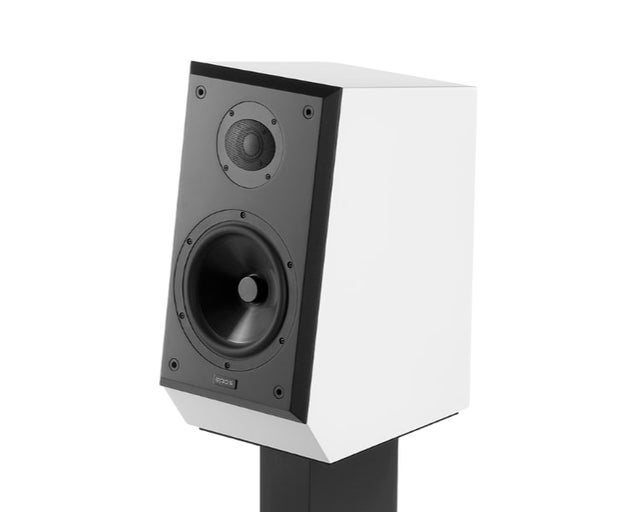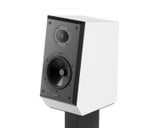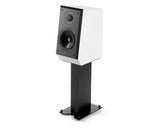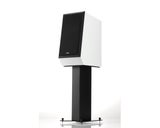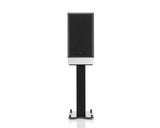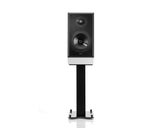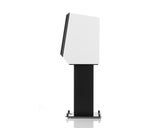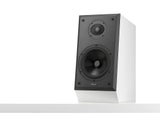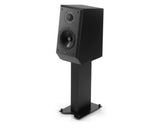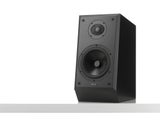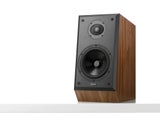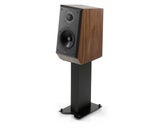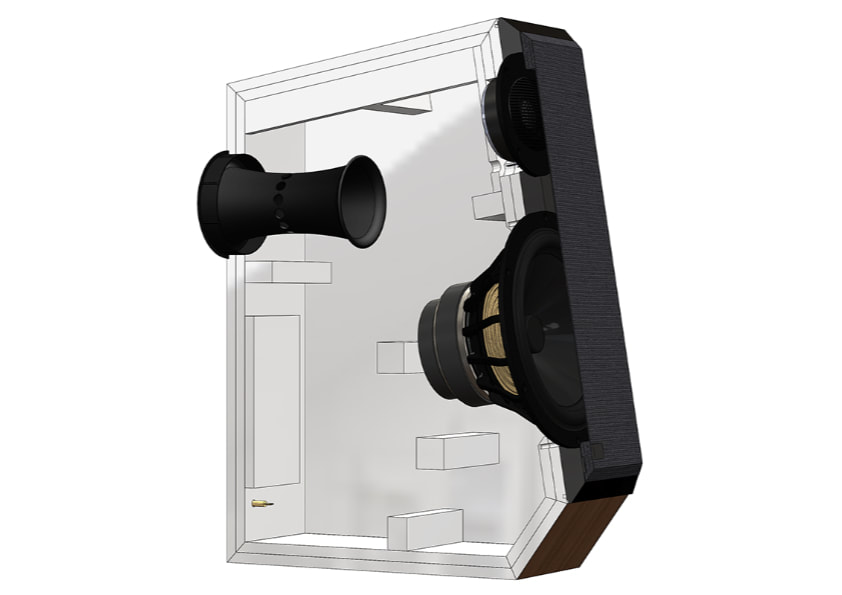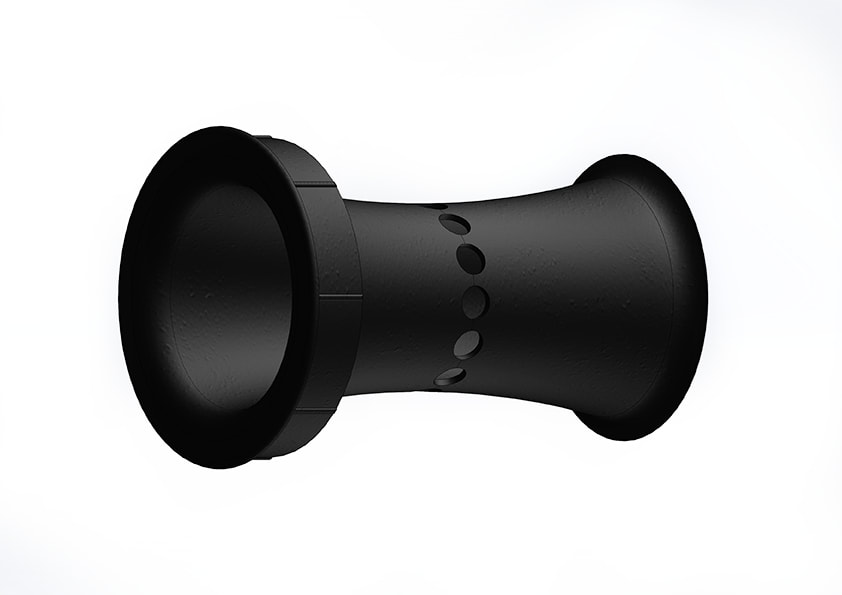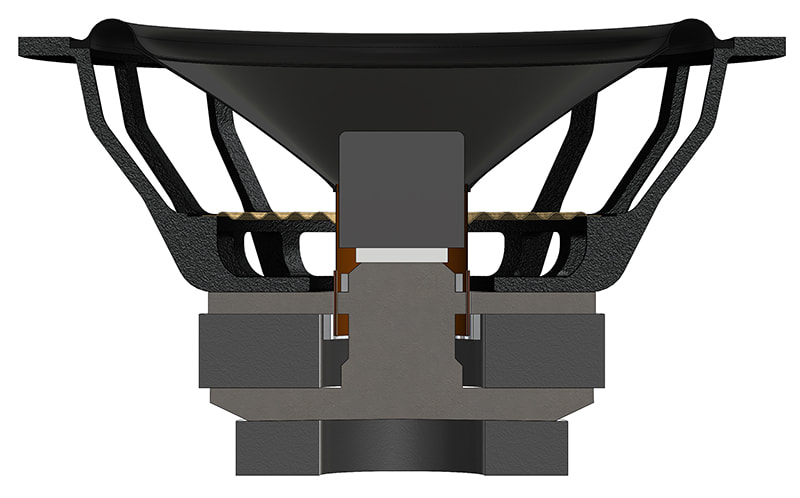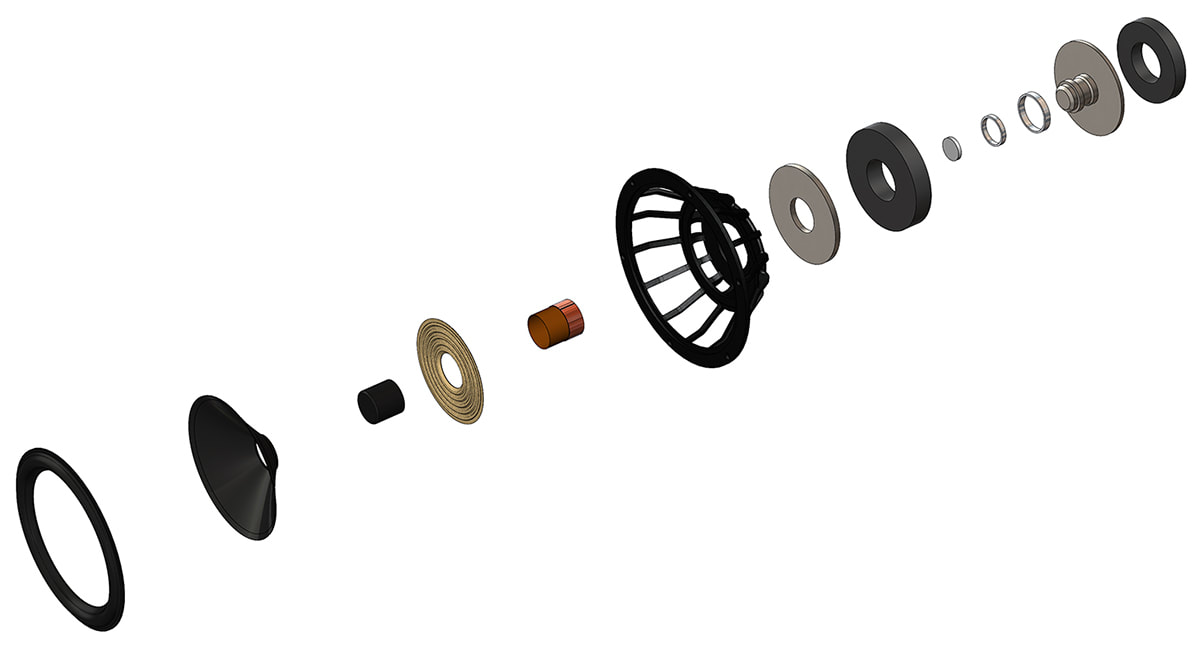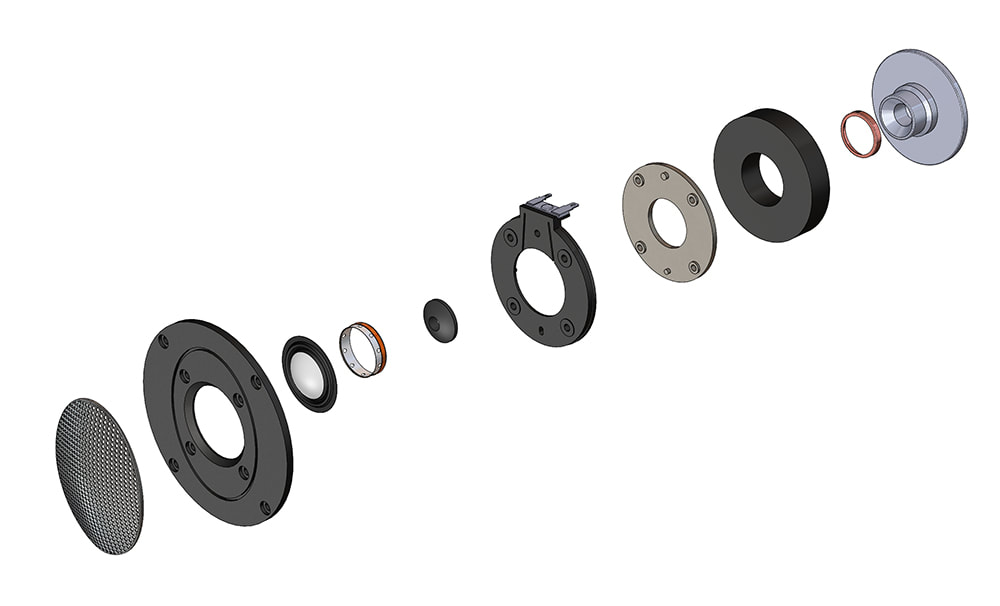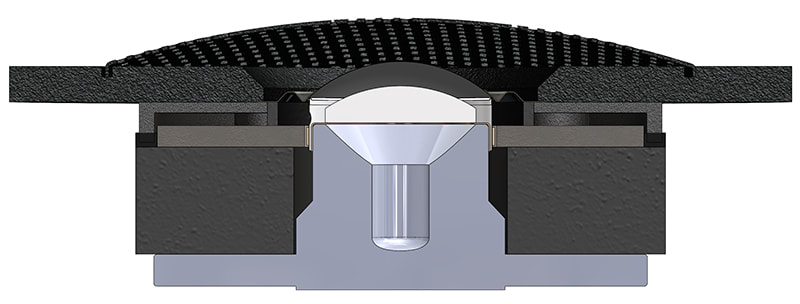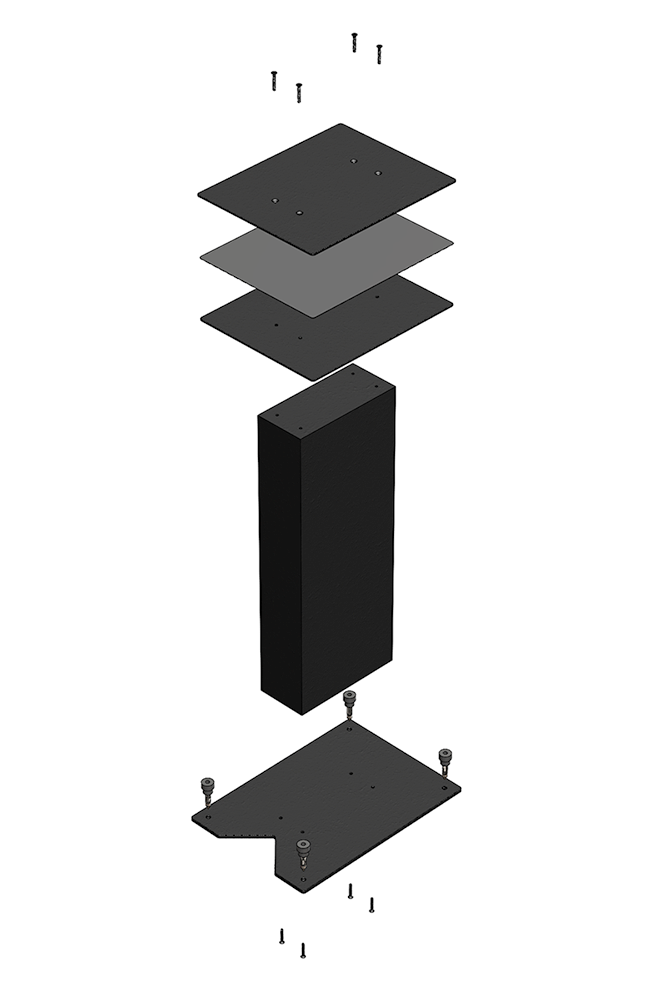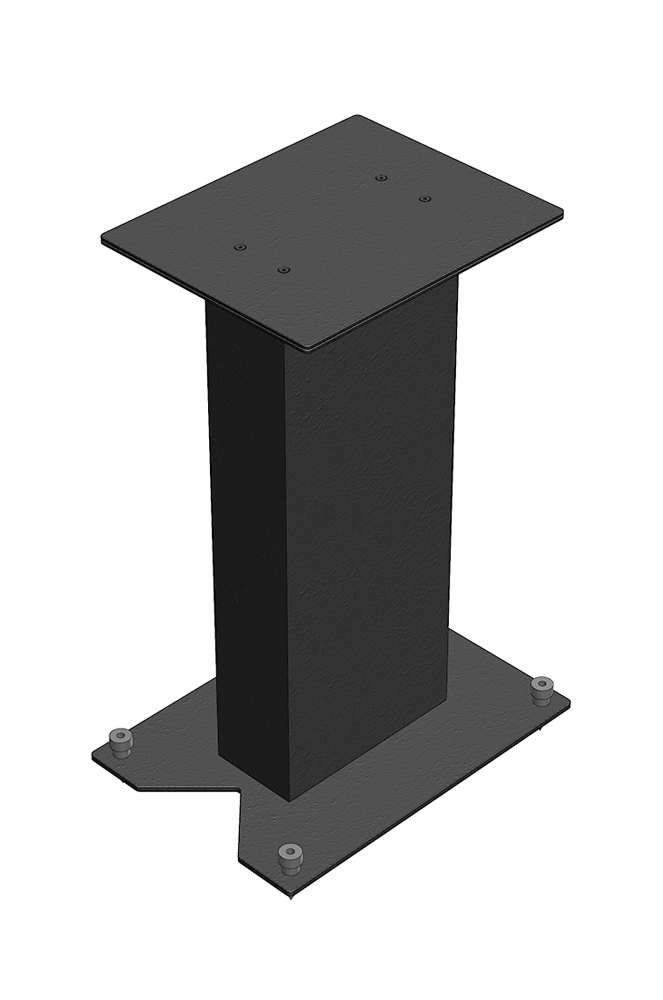- Loudspeakers
- >
- Standmount Loudspeakers
- >
- Epos | ES14N - Loudspeakers
Epos | ES14N - Loudspeakers
BACK TO THE FUTURE. A classic speaker returns to the future.
Restarting EPOS could only mean re-creating the most famous model, the ES-14. This was a 2-way speaker in a fairly big cabinet and classic looking cabinet, to be used on a dedicated stand. The design should be classic, not lifestyle, only doing things that help with the sound and as straight forward as possible.
Analyzing the old construction was interesting. It used a 7“ woofer with Polypropylene cone and an underhang coil with a huge magnet, but multiple layers of VC winding to make the whole coil heavy in order to get a sort of roll-off in the response curve of the woofer. The size of the woofer was not following any standard – too big for a 6.5“, but too small for an 8“. But it was a clever choice, because you could get more drive at lower frequencies more like an 8“ and a midband character closer to the 6.5“.
AVAILABLE TO ORDER | IN-STORE COLLECTION ONLY - Please contact us for information on stock availability and lead time before making a purchase
Reviews
CLICK IMAGES FOR FULL REVIEW
Cabinet
The cabinet uses a double layer MDF construction, glued together with the latest generation of damping glue. This latest generation is more consistent compared to older solutions and allows easier production. Additional bracing has been used to control the panel vibration modes and reduce the unwanted radiation of the whole cabinet. Only a little damping material is needed internally.
The alignment of the box is a flat 4th oder alignment with a tuning frequency of 38Hz. It matches with the bottom end gain of many listening rooms and allows fast and precise bottom end when used in the right position in the room. The binding posts are 4mm banana sockets, mounted on a metal plate. Those banana sockets use very little metal internally to guarantee the best sound – that’s one of the nice ideas of the original design and better than using very expensive “High-End“ binding posts with litte metal but a high price tag. Those single wiring sockets feed the amplifier signal to a crossover that sits on the rear panel of the speaker.
Crossover
The original crossover needed very little components and was extremely simple, the new ES-14N follows the experience of the last 20 years that electrical parts are easier to control than mechanical filtering in driver units. In earlier days, before Klippel, the multilayer coil of the original woofer was designed in a way that it rolled off the woofer with the weight and the high inductance of the windings. In the new woofer, the coil is only 2-layer and with compensation rings, the impedance over excursion is very constant and that avoids modulation of the crossover. The coil is executed as air coil and adds no core distortion. A non compensated magnet, would indeed react with a crossover and that means the old idea made sense. However, the way to roll off the woofer with high inductance, added another set of problems – but we learned about it only in the last 20 years. There is a small resistance between the woofer and the amplifier in tower to make the design less sensitive to different damping factors. Instead a larger magnet controls the alignment. The tweeter is using no Ferrofluid in the gap to suppress the resonance frequency of the tweeter. Ferrofluid sounds like a good idea, but it is a sort of oil that changes behavior when playing music. This is a very non linear process and modifies the sound depending on level and music style. Tweeters with no Ferrofluid are more open and natural and show less dynamic compression compared to standard tweeters with Ferrofluid. The other side of the coin: it needs a bit more crossover to be safe, but the total combination is a lot more linear. Even so the metal dome peak is shifted to around 30kHz, a new sort of filter has been added to notch it out without changing the level below 20kHz. The reason is that modern digital converters are shifting a lot of noise to higher frequencies.
Impedance and Distortion
|
IMPEDANCE
The speaker should be an easy load for amplifiers – that’s why the average impedance is higher than a usual 4 Ohm speaker. I also got a compensation in the midband to make it easier for tube amplifiers. |
DISTORTION
Modern speakers should be capable to deliver low distortion even at higher levels. Below the measurements @87dB and at 96@ |
Mid/Bass Driver
Tweeter
Stand
Specifications
|
Frequency Response:
40Hz – 23kHz (-6dB) 33Hz – 25kHz (-10dB) Average Impedance: > 6 Ohm Minimum Impedance: 4.3 Ohm @ 160Hz Sensitivity: 87dB @oe2.823V / 1m Distortion: 0.2% THD @ 1W Crossover Frequency: 2700 Hz Bass Unit: High Power 7“, 35 mm voice coil diameter, Hybrid Ferrite and Neodymium magnet, injection molded cone with variable thickness and Mica filling. Low hysteresis rubber surround. |
HF Unit:
28 mm tweeter with Aluminum/Ceramic compound dome and no Ferrofluid Dimensions: 491 x 250 x 385 mm (HWD) Stand: recommended height 515 mm Weight: 16 kg without stand Finish: Walnut, White semi matte, Black semi matte Cabinet: Reflex loaded, damped Sandwich panels, one dimensional braces, Low Noise Port, Duo Frontpanel Terminal: German made Low Metal Mass 4 mm Banana terminal |

